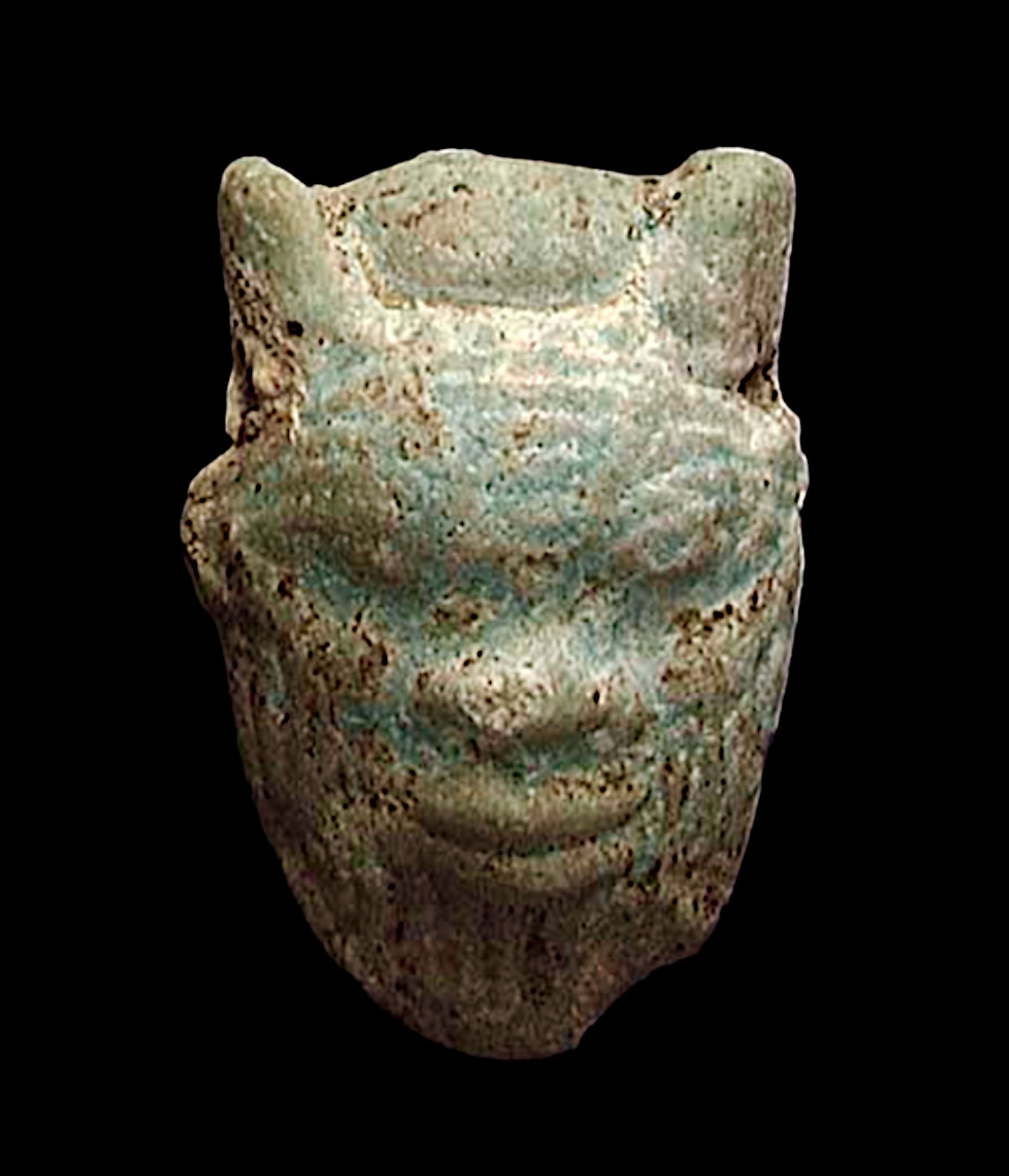

Title: Rare Turquoise Faience Amulet Ceramic Head Sculpture Ancient Artifact
Shipping: $29.00
Artist: N/A
Period: N/A
History: Ancient Art
Origin: N/A
Condition: N/A
Item Date: N/A
Item ID: 1303
A Fine and Rare Faience Amulet: Egypto-Phoenician or Etruscan, circa mid to late 1st millennium BC. This pale turquoise faience amulet features a truly exceptional molded depiction of the head of Bes or Silenos. Measuring 22 mm, it is in excellent condition and is an exceedingly rare find. The piece includes a molded lateral suspension hole above the ears, adding to its remarkable craftsmanship. A pale turquoise faience amulet is a small decorative object crafted from faience, a ceramic material made by firing a quartz-based paste coated with a glassy glaze. The pale turquoise color, achieved through the addition of copper compounds, was highly valued in ancient times for its resemblance to precious stones like turquoise. Amulets often held symbolic or protective significance, with intricate designs representing deities, mythical figures, or abstract motifs. The craftsmanship of these amulets, including fine details like suspension holes for wearing or attachment, reflects the advanced artistic and technological skills of the cultures that produced them, such as the Egypto-Phoenician or Etruscan civilizations.
Faience amulets have a rich history rooted in ancient civilizations, particularly in Egypt, where they were crafted as symbols of protection, power, and spirituality. Emerging as early as the Predynastic Period (circa 4000 BCE), faience became a popular material due to its vibrant, glass-like finish, achieved through the application of a silica-based glaze. The bright colors, especially turquoise and blue, symbolized fertility, rebirth, and divine protection, often associated with deities like Hathor and Bes. Over time, the use of faience amulets spread across the Mediterranean and Near East, including Phoenician, Etruscan, and Mesopotamian cultures. These amulets, often depicting gods, animals, or symbols, were worn, carried, or placed in tombs to ensure the wearer’s safety, prosperity, or passage to the afterlife. Their widespread production and intricate designs reflect both the technological ingenuity and the spiritual beliefs of the ancient world. A faience amulet is a small, intricately crafted object made from faience, an ancient ceramic material composed of powdered quartz mixed with other natural elements and coated with a brightly colored, glass-like glaze. Popular in ancient Egypt and other Mediterranean cultures, these amulets were often created in shades of turquoise or blue, symbolizing life, fertility, and protection. They served both decorative and functional purposes, often embodying spiritual or magical significance. Representing deities, animals, or symbolic motifs, faience amulets were worn as jewelry, carried as talismans, or buried with the dead to safeguard their journey to the afterlife. Their durability and radiant beauty have made them enduring artifacts that offer insight into the beliefs and artistry of ancient civilizations.
WWW.history.com
11/1/2008 Oleg11/1/2008 Oleg11/1/2008 Oleg11/1/2008 Oleg11/1/2008 Oleg11/1/2008 Oleg11/1/2008 Oleg11/1/2008 Oleg11/1/2008 Oleg11/1/2008 Oleg11/1/2008 Oleg11/1/2008 Oleg11/1/2008 Oleg11/1/2008 Oleg11/1/2008 Oleg11/1/2008 Oleg11/1/2008 Oleg
11/1/2008 Oleg
11/1/2008 Oleg
11/1/2008 Oleg
11/1/2008 Oleg
11111111111111111111111111111111111111111111111111111111111111111111111111111111111111111111111111111111111111111